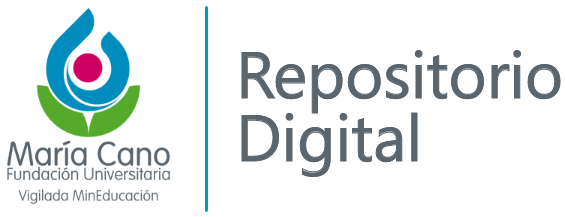Mostrar el registro sencillo del ítem
Análisis biomecánico del movimiento en hernia discal posterior lumbar
| dc.rights.license | Atribución-NoComercial-SinDerivadas 4.0 Internacional (CC BY-NC-ND 4.0) | spa |
| dc.contributor.advisor | Acevedo Zuluaga, Pamela | |
| dc.contributor.author | González López, Isabel Cristina | |
| dc.contributor.author | Ramírez Salazar, Kelly | |
| dc.date.accessioned | 2023-11-09T15:45:50Z | |
| dc.date.available | 2023-11-09T15:45:50Z | |
| dc.date.issued | 2010 | |
| dc.identifier.uri | https://repositorio.fumc.edu.co/handle/fumc/862 | |
| dc.description.abstract | La hernia discal lumbar posterior es una de las alteraciones más comunes en la actualidad; no solo porque es el lugar en donde se soporta la mayoría del peso, sino porque es el lugar en donde se acumula más presión y estrés al realizar los diferentes movimientos. Esta patología se produce por diferentes mecanismos, uno de los principales es la realización de movimientos repetitivos durante un tiempo prolongado principalmente los de flexo-extensión; otro mecanismo de producción es la sobrecarga; mientras se realiza el movimiento y se soporta un peso adicional, en hombre mayor a 25 Kg y en mujer mayor a 12.5Kg. La columna vertebral es el pilar fundamental del cuerpo humano porque soporta todo el peso y lo distribuye uniformemente por todo el cuerpo, evitando así un sobre esfuerzo de las estructuras implicadas en cada uno de los movimientos, esta debe conciliar dos imperativos mecánicos contradictorios: La rigidez, la flexibilidad y la absorción de impactos; así mismo los ligamentos longitudinales cumplen la función de estabilizadores y los ligamentos amarillos proporcionan elasticidad. En esta investigación se hizo un recorrido por los diferentes mecanismos de producción de la hernia discal que por su importancia y por su elevada producción nos ha llevado a nuestro tema central, identificando cada uno de los movimientos y estructuras que se afectaron y al mismo tiempo siendo una guía para aumentar los conocimientos y la comprensión de esta. Debido a las malas costumbres, malos hábitos y desordenes posturales se han aumentado las alteraciones de columna vertebral; una de las principales patologías por las cuales se presenta mayor incapacidad para realizar las actividades de la vida diaria, es la hernia discal posterior en la zona lumbar; ya que las personas no conocen las diferentes formas de desencadenar este tipo de patología; porque se presenta al realizar movimientos normales de la columna, pero con muchas repeticiones y con sobreesfuerzo. | spa |
| dc.description.abstract | Posterior lumbar disc herniation is one of the most common disorders today, not only because it is the place where it supports the most weight, but because it is the place where it accumulates more pressure and stress to perform different movements. This condition is caused by different mechanisms, one of the most important is the performance of repetitive movements for a long time mainly flexion and extension, another mechanism of production is overloaded while performing the movement and extra weight is supported in greater than 25 kg man and woman to 12.5Kg. The spine is the cornerstone of the human body because it carries all the weight and distributes it evenly throughout the body, thus preventing overexertion of the structures involved in each of the movements, it must reconcile two conflicting mechanical requirements: Stiffness, flexibility and shock absorption, likewise the longitudinal ligaments play the role of stabilizers and yellow ligaments provide elasticity. In this research we made a tour of the different mechanisms of production of a herniated disc due to its importance and its high production has led us to our central theme, identifying each of the movements and structures that are affected and at the same time being a guide to increase knowledge and understanding of this. Due to bad habits, bad habits and postural disorders have increased spine disorders, one of the major diseases for which there is also greater inability to perform activities of daily living, is the posterior disc herniation in the lumbar, because people do not know the different ways to trigger this pathology, because it shows the normal movement of the spine, but with many repetitions and overuse | eng |
| dc.format.extent | 11 p. | spa |
| dc.format.mimetype | application/pdf | spa |
| dc.language.iso | spa | spa |
| dc.rights | Derechos Reservados - Fundación Universitaria María Cano, 2010 | spa |
| dc.rights.uri | https://creativecommons.org/licenses/by-nc-nd/4.0/ | spa |
| dc.title | Análisis biomecánico del movimiento en hernia discal posterior lumbar | spa |
| dc.type | Trabajo de grado - Pregrado | spa |
| dc.type.version | info:eu-repo/semantics/publishedVersion | spa |
| dc.type.coarversion | http://purl.org/coar/version/c_ab4af688f83e57aa | spa |
| dc.rights.coar | http://purl.org/coar/access_right/c_abf2 | spa |
| dc.description.degreelevel | Pregrado | spa |
| dc.description.degreename | Fisioterapeuta | spa |
| dc.description.program | Fisioterapia | spa |
| dc.identifier.instname | Fundación Universitaria María Cano | spa |
| dc.identifier.reponame | Repositorio Institucional Fundación Universitaria María Cano | spa |
| dc.identifier.repourl | https://repositorio.fumc.edu.co/ | spa |
| dc.publisher.faculty | Facultad de Ciencias de la Salud | spa |
| dc.publisher.place | Medellín | spa |
| dc.relation.indexed | RedCol | spa |
| dc.rights.accessrights | info:eu-repo/semantics/openAccess | spa |
| dc.subject.proposal | Hernia | spa |
| dc.subject.proposal | Biomecánica | spa |
| dc.subject.proposal | Columna vertebral | spa |
| dc.subject.proposal | Disco intervertebral | spa |
| dc.subject.proposal | Patología | spa |
| dc.subject.proposal | Biomechanics | eng |
| dc.subject.proposal | Spine | eng |
| dc.subject.proposal | Intervertebral disc | eng |
| dc.subject.proposal | Pathology | eng |
| dc.type.coar | http://purl.org/coar/resource_type/c_7a1f | spa |
| dc.type.content | Text | spa |
| dc.type.driver | info:eu-repo/semantics/bachelorThesis | spa |
| dc.type.redcol | https://purl.org/redcol/resource_type/TP | spa |
Ficheros en el ítem
Este ítem aparece en la(s) siguiente(s) colección(ones)
-
AAF. Fisioterapia [963]


